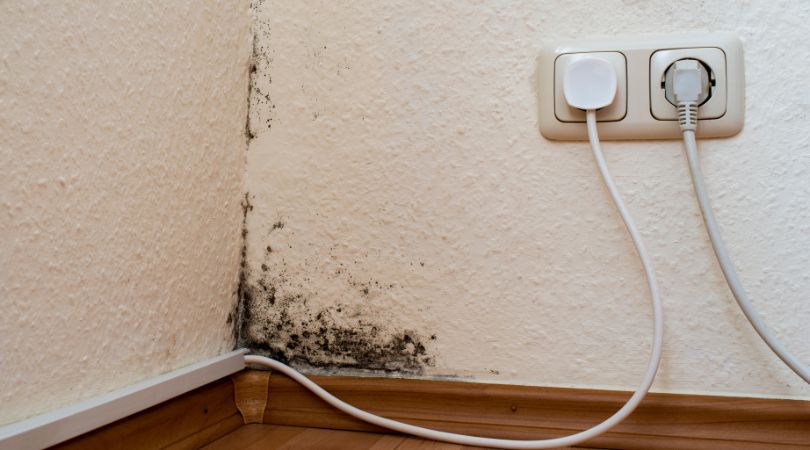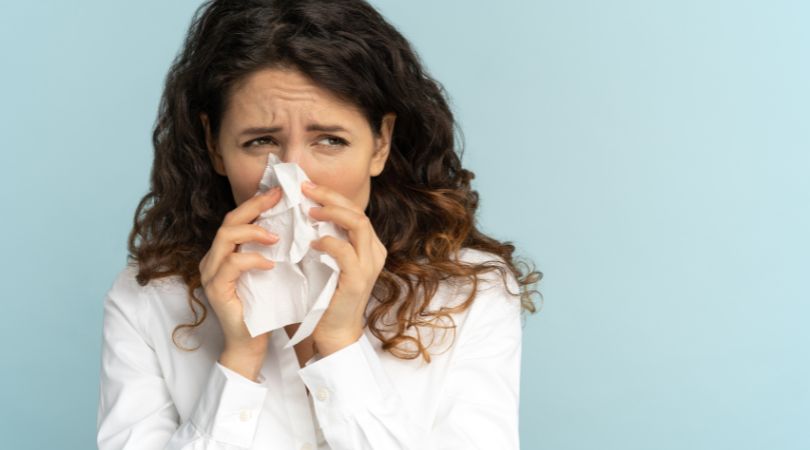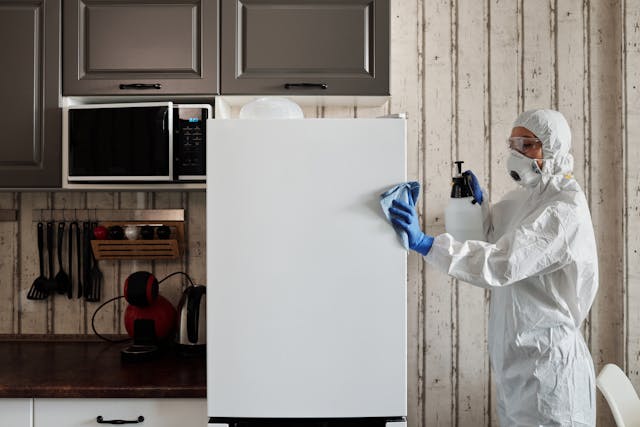A Guide To Mold Growth Under Flooring
Does your home have a musty smell, or have you come across black spots underneath a broken tile in the kitchen or bathroom? These are all telltale signs that your home’s flooring has mold.
Mold can grow underneath the floor as a result of various factors, including high levels of indoor condensation, a broken water pipe, or a slow water leak. Mold could also come about as a result of poor workmanship when the flooring was being laid down.
The following are answers to commonly asked questions regarding mold growth under flooring.
What Are The Signs That Mold Is Growing Under Your Home’s Floor?
Have reasons to suspect mold is growing beneath the floor? If you do, the following are the signs to look out for:
- A musty odor. This odor can suggest that mold is growing in your home. The musty odor is produced by microbial volatile organic compounds, which are often associated with mold growth. The smell compares to rotten wood, dirty socks, or decaying wood
- Visible water stains. Water stains can be an indicator of the presence of mold, as mold growth is often a result of water damage. So, if you spot them on your flooring, then it’s likely mold is growing behind them. Look out for yellow or brown coloration

- Check underneath the flooring for mold. Carefully pull up the planks and check whether you can spot mold. You can choose to do this yourself or call a professional inspector like Marham Services to do it on your behalf. Look out for mold coming from the edges of the planks
- Test for mold using a mold detector. A mold kit can detect spores in any area and how many they are in the air. Markham Services has the best methods for mold detection, ensuring nothing escapes notice and causes an issue down the line
Does Mold Grow Under Vinyl Flooring?
Vinyl flooring has been trending lately. Homeowners prefer it over other types of flooring due to it being budget-friendly, water-resistant, easy for maintenance, and long-lasting.
But the question of the day is – can mold grow under vinyl flooring? Well, the thing is mold can pretty much grow anywhere as long as the right conditions exist.
Sure, vinyl floors are moisture resistant. However, mold can still grow along the edges of the planks or where the floor meets the wall. Mildew can also occur beneath the vinyl flooring during installation if there are liquids on the concrete.
Can Mold Growing Underneath The Flooring Be Dangerous?
Most mold is neither toxic nor hazardous. Some molds, however, have mycotoxin which makes mold a health hazard.

Although mycotoxins are toxic, other molds can be allergenic or even pathogenic. People allergic to mold can experience more severe reactions after getting exposed to its spores. Those with weaker immune systems or chronic lung problems can experience serious lung infections.
Is Mold Removal Difficult To Do?
You can get rid of mold in multiple ways. While doing it yourself can be cost-effective, it’s usually not a good idea. If you do it wrong, the problem will only get worse and put your family at risk.
Hiring professionals is usually the right move to make. They will know exactly where to look for mold and the best way to get rid of it once and for all. This will save you the hassle of repeated attempts at ending the problem. A mold inspection and testing service provider like Markham Services can help you get started!
What Does One Need To Remove Flooring Mold On Their Own?
Although not recommended, if you wish to give cleaning mold a try, the following are some of the things you’ll need for the job:
1. The Right Cleaning Products
First things first, you’ll need to prepare the correct materials to get the job done right. Contrary to popular belief, bleach isn’t an effective mold removal product. It doesn’t get rid of mold and only bleaches its color from black to white.
Borax is highly recommended as a mold remediation product. To get rid of mold using borax, you’ll need to mix it with one gallon of hot water. Then, apply the solution to the area affected by mold beneath the flooring. Next, scrub the area with a brush until the mold cannot be seen anymore. You don’t have to rinse the area after applying the solution.

Other effective cleaning products include vinegar, baking soda, hydrogen peroxide, and tea tree oil.
2. The Right Clothing
You’ll also need to wear special protection equipment before starting the remediation project. The gear includes disposable gloves, safety goggles, disposable shoe covers, disposable hair covers, and clothing/Tyvek suits.
You’ll also need to dry the surface. Remember, mold requires moisture to grow. Mold loves growing in a humid, damp environment. And since you’ll use water for the cleaning, the surface will remain wet for some time. To speed up the drying process, dry the surface using a dehumidifier or fans.
What If The Mold Is Black?
When it comes to removing black mold, hiring a professional is highly recommended. Unlike other mold types, black mold is a serious health hazard, especially for high-risk individuals.
The most common health issue caused by black mold is respiratory. After prolonged exposure, you may start experiencing sneezing, coughing, or an itchy throat. High-risk individuals like children or the elderly could experience long-term health issues.
Bottom Line
Mold is a health hazard. The effect of mold exposure can be severe, especially for people who are sensitive to mold. If you have reasons to believe you have mold, seek professional help as quickly as possible.
Markham Services is a Central Florida mold testing and inspection company. Our specialty is in inspections, mold testing, indoor air quality testing, and post-remediation testing throughout Central Florida. Get in touch to learn more!


